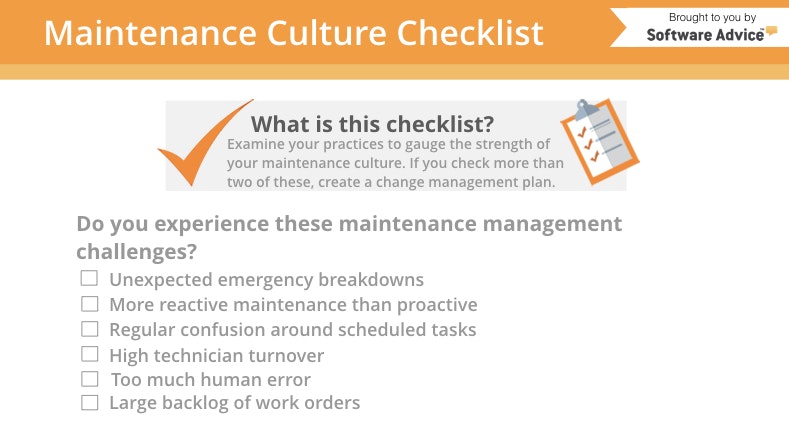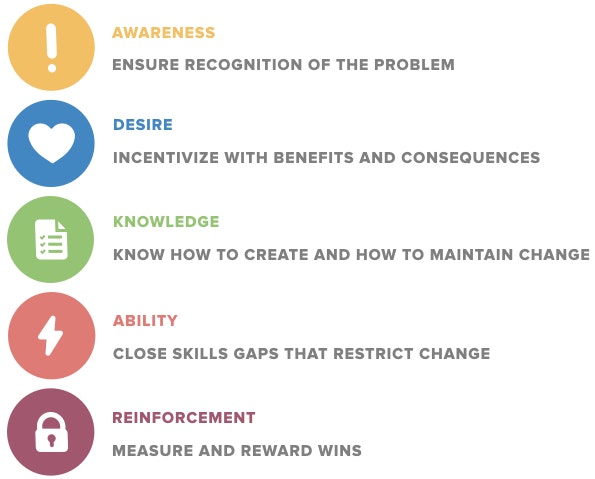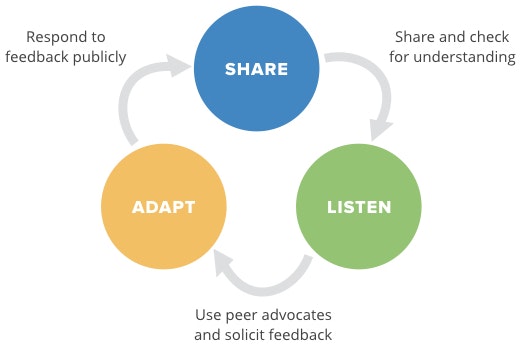Achieve Great Maintenance Culture With 4 Change Management Practices
Do these issues sound familiar?
Your technicians forget about work orders occasionally
Emergency repairs are common
Maintenance management is just too expensive
All of these indicate a poor maintenance culture—that is, the values and behaviors that impact the performance of your maintenance teams. But achieving a strong maintenance culture, to improve efficiency and cut costs, is possible through four key change management practices.
While it’s not always easy to affect the behavior of employees, we offer some philosophies and change management best practices from Gartner (content available to Gartner clients) to shift your organization’s culture toward proactive maintenance.
Checklist: Find Out If You Have Poor Maintenance Culture
The symptoms of an underdeveloped maintenance culture should be clear to see. Many common issues within maintenance departments fall under the following checklist, showing how pervasive poor maintenance culture is.
Use this checklist to see how many symptoms your team experiences:

Once you identify several areas for improvement—maybe you’d like to eliminate unplanned asset failures and automate more of the process to remove human error—you can create a change management plan to specifically tackle the weak spots of your current maintenance culture.
Next, we’ll offer effective tips for changing your maintenance culture for the better using best practices from Gartner.
Four Change Management Practices to Improve Maintenance Culture
Gartner’s research on change management offers four practices and corresponding actions to give your organization the necessary tools to achieve a more efficient maintenance culture.
1. Organizational Change Requires Methodology—Use the Popular ADKAR Model
These kinds of significant changes to the way an entire department operates requires a methodology with consistent language, responsibilities and goals.
Many Gartner clients use a popular change management model called ADKAR, which breaks down organizational change into five key outcomes:

The steps of the ADKAR model help guide the change, tapping into both hard skills and emotional appeals that foster a smooth transition to a new way of thinking.
Achieving a strong maintenance culture using this type of methodology also requires a change leader—someone internal with change management experience or, if necessary, an external consultant who can also transfer their knowledge to someone in your company.
The change leader is critical in tracking the progress of change within various teams over time and communicating back to executives about roadblocks and ways to adapt. Without this person, it’s easy to lose sight of progress and important messages can go unshared.
Next, task this change leader with a smaller project that will help ramp up toward your larger goals. For example, a great place to start for better maintenance management is setting up a dashboard and gathering the right data to populate it with valuable KPIs.
2. A Clear Goal Inspires Change—Create a Straightforward Vision
The goal may be, simply, to reduce or eliminate the symptoms of poor maintenance culture outlined above in our checklist. But something so vague is unlikely to inspire action from your team.
So it’s crucial to make the results you want from a culture change distinct and realistic.
EXAMPLE: Instead of “eliminating the backlog of work orders,” challenge your organization to “reduce the average backlog of work orders by 50 percent within six months.”
That’s a tangible milestone to reach and should come with specific ways to get there, like standardizing the causes for late or missed tasks and performing an audit of this information to find the underlying cause.
An effective way to keep the momentum going for the change is through communication between change leaders and employees. Gartner offers five questions that help gauge worker engagement throughout the transition. Employees should be able to answer:
What is the vision?
Why are we doing this?
Who will have more information?
When and how can I contribute?
How can I get started?
What do employees say when asking themselves these questions? Based on the responses, change leaders can determine whether to push forward or re-communicate the vision and the reason for change.
3. Consistent Messaging Creates Consistent Results—Craft a Communication Plan
With a clear vision and a structured methodology to enable change, the next step is communicating both to employees.
It’s important to note: Maintenance culture involves everyone in the organization, from technicians on the shop floor, to middle managers assigning work, to C-level executives. And each of these groups need unique but consistent messaging to truly drive home the vision for improved maintenance.
For stronger maintenance culture, Gartner recommends creating an internal informational site, soliciting feedback when communicating change, and suggests different platforms to leverage for effective communication:
How to Improve Change Communication
Internal site | Change leaders and executives should create an internal site, accessible by everyone, that lays out the vision, reasons for change and specific goals and milestones. This serves as a “single point of truth” for the change that evolves over time. |
Feedback portals | Include, within the internal site or another existing communication tool, a portal where anyone in the organization can ask questions or submit comments about the change initiative. |
Multi-channel communication | Informational videos, social network groups (such as LinkedIn or Facebook), contests or games, small group discussions as well as more formal town hall meetings, or any other ways people in your company share important information. |
Change leaders can determine the best communication methods by looking into how each department communicates internally. For example, your maintenance technicians may hold morning group meetings to review the day’s tasks, whereas executives tend to share important information via email.
4. Big Changes Start with Small Steps—Spread Culture Values Through Peer Advocates
Hesitation about introducing sweeping changes often comes from a fear of employee resistance, but workers will support company-wide goals when they understand the vision and have a simple first step to take.
With a communication plan in place, recruit peer advocates in each department who are committed to the change and understand the goals. They can help spread broad messages to others in their teams in a way that they understand and can act on.
Share, Adapt, Listen is a useful model that advocates can use for iterating on communication to ensure employees understand the why and how of the push toward a strong maintenance culture.

Select peer advocates who are already strong communicators and respected by peers. It’s also wise to choose different people, if possible, within a team at different intervals to increase engagement.
Strong Maintenance Culture Starts with Change Management
The day-to-day work of maintenance management is usually more hands-on than influencing behavior and encouraging company-wide changes.
But without establishing a shared vision, a consistent message and ongoing reinforcement of expectations, your maintenance team will struggle with unplanned breakdowns and large work backlogs.
Let’s recap the four change management best practices:
Use a methodology, like ADKAR, to establish a structure for change
Create a clear, realistic vision of your maintenance goal(s)
Tailor messaging to the communication style of each team
Roll out strong culture values using peer advocates
Using this advice to improve your maintenance operations also impacts the effectiveness of the technology you use to track work and data—a CMMS or facilities management system will be invaluable for proving positive change in maintenance management